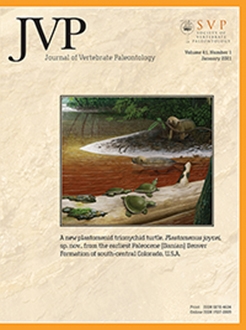The middle and late Eocene perissodactyl fossil record of western Iberia is characterized by an endemic fauna, which is clearly different from those of northeastern Iberia and other areas of the European archipelago. In this work, we describe three endemic equoid taxa belonging to the family Palaeotheriidae. Two come from the late Eocene site of Zambrana (Miranda-Treviño Basin, Araba/Álava, Spain) and correspond to new species: Leptolophus cuestai, sp. nov., and Leptolophus franzeni, sp. nov. Leptolophus cuestai, sp. nov. is the largest species of Leptolophus and exhibits thick coronal cementum and a very high hypsodonty index, unusual for an Eocene equoid. Leptolophus franzeni, sp. nov. is described from a cranium which includes the canines, which are otherwise unknown in Leptolophus. The third taxon, from the late middle Eocene site of Mazaterón (Almazán Basin, Soria, Spain), described provisionally as Leptolophus sp., could be another new Iberian species. The Iberian taxa are characterized by having: more hypsodont, lophodont and heterodont dentition than the Central European Leptolophus taxa (L. stehlini, L. nouleti and L. magnus); thicker styles and stylar ribs in the upper jugal teeth; and thicker coronal cementum. The precocious development of coronal cementum and the high hypsodonty index could be related to different foraging conditions (tougher vegetation, more open or drier habitats with a higher consumption of grit in the diet) inhabited by the Iberian Leptolophus species with respect to their Central European contemporaries.
How to translate text using browser tools
23 September 2021
New Leptolophus (Palaeotheriidae) Species from the Iberian Peninsula and Early Evidence of Hypsodonty in an Eocene Perissodactyl
Leire Perales-Gogenola,
Ainara Badiola,
Asier Gómez-Olivencia,
Xabier Pereda-Suberbiola
ACCESS THE FULL ARTICLE






